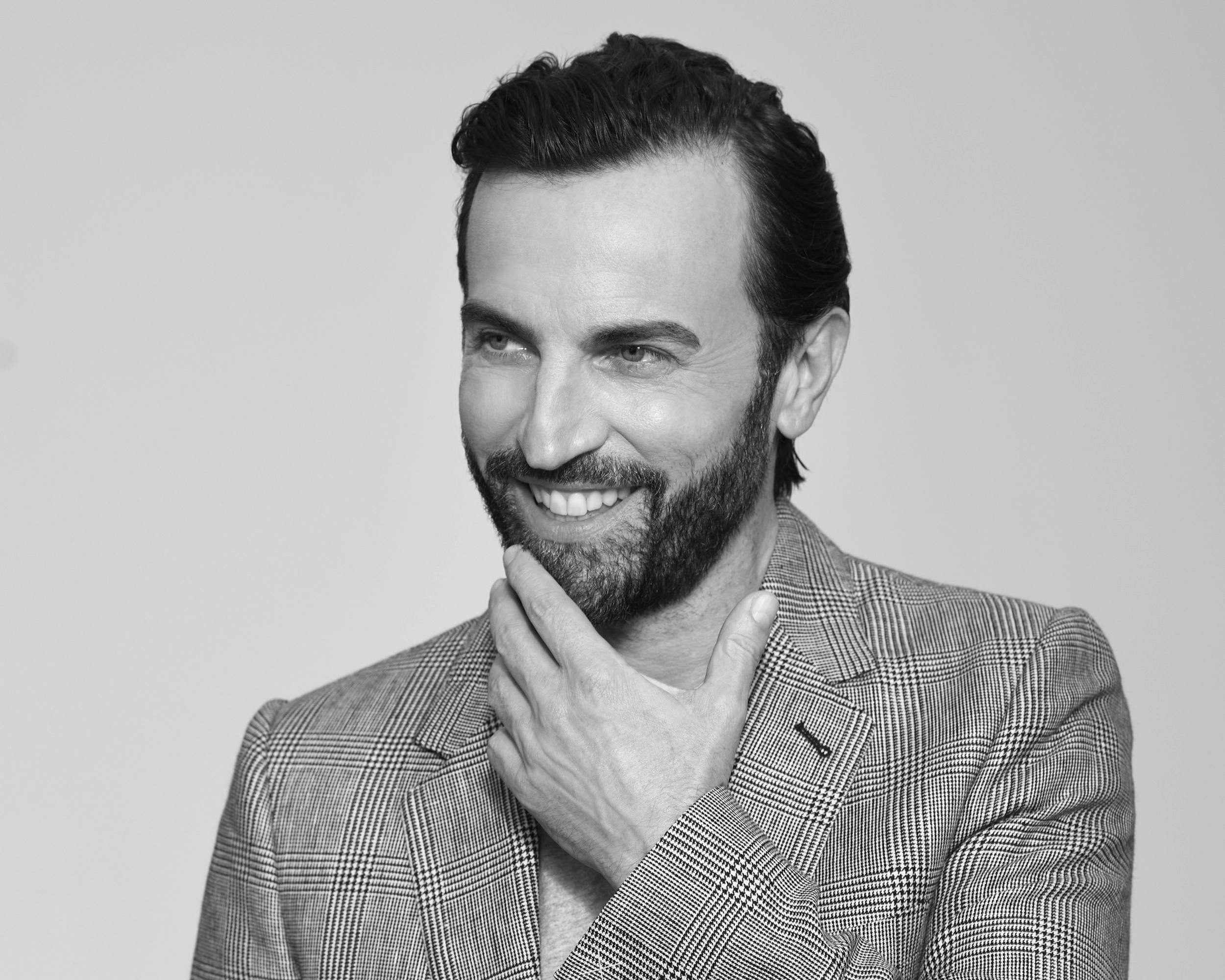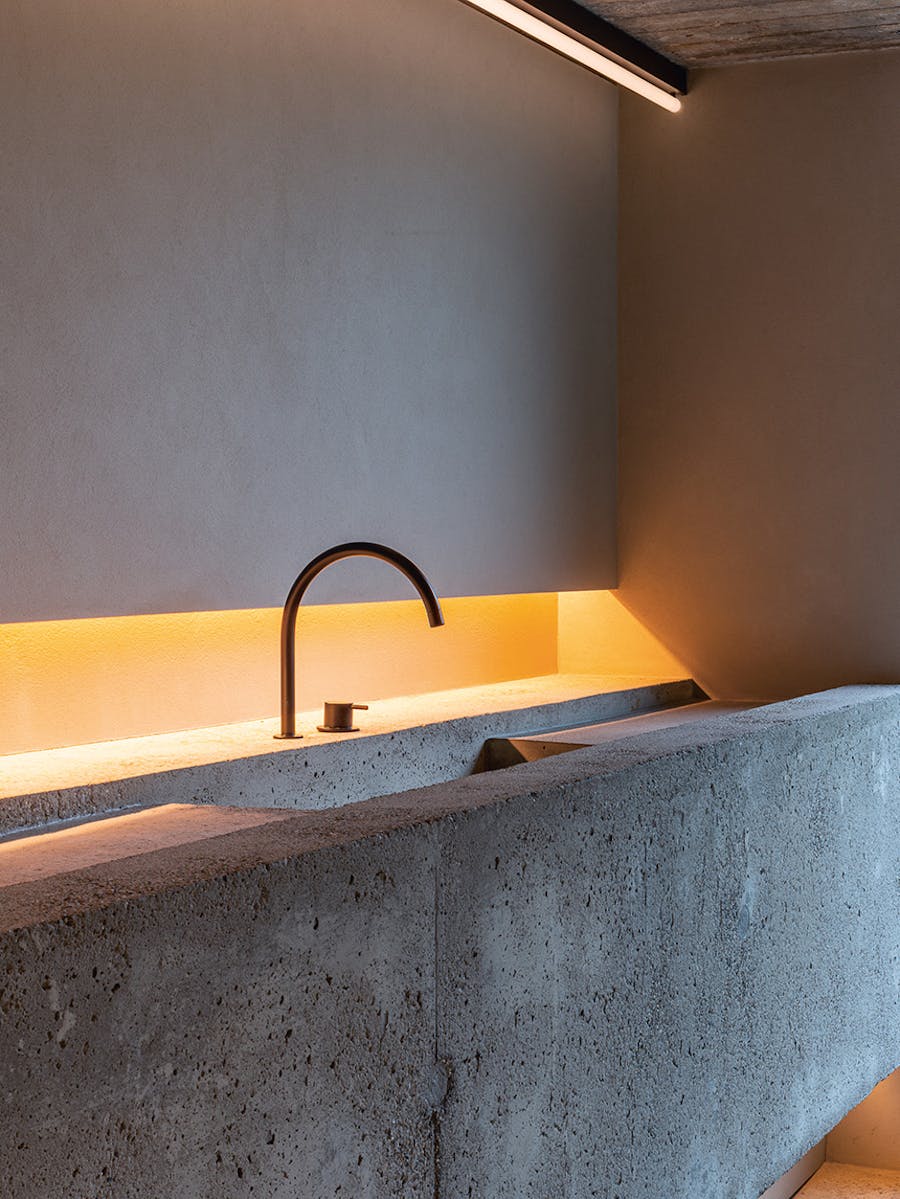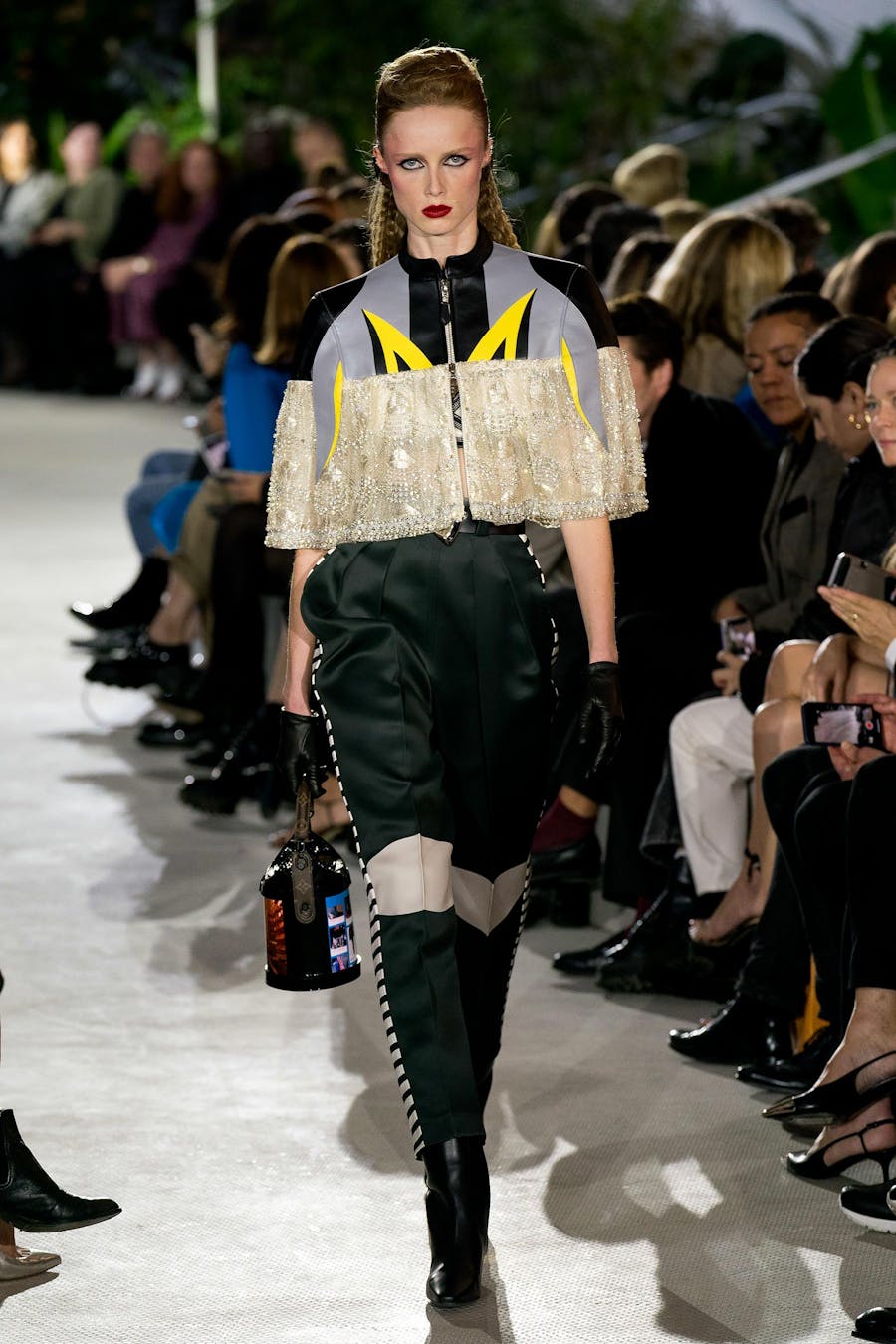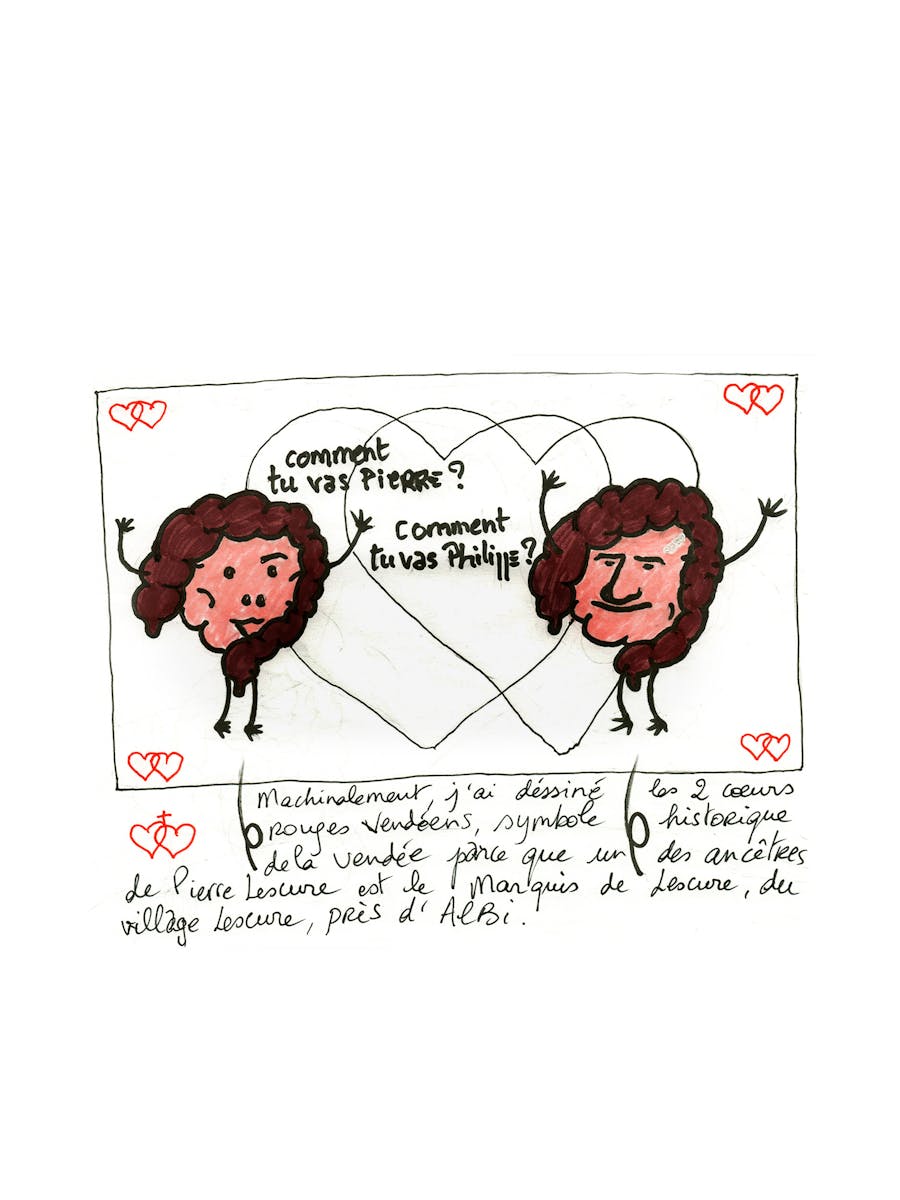We all know Nicolas Ghesquière’s unwavering commitment to design. It’s always been there, since his adolescence, and his career has been an example of unparalleled tenacity. For ten years, he has taken Louis Vuitton on a journey of untrammeled imagination. He loves reinventing curves and cuts, defining new proportions that have now become classics of the female silhouette. Full-steam ahead, his momentum always keeps its cutting-edge. And emphasis, the founding principle of his spring-summer collection, is fundamentally the hyperbole of his passion for total fashion. Interview.
What is this collection, in which the relationship to scale is completely destructured, telling us?
For a long time we have associated the male wardrobe with power. Many women have dressed as men to be free. An opposition to hyper-femininity can also be linked to power, to freedom of choice. Today, dressing very consciously as a woman, even in a hyper-sexualized way, is also a new form of feminism. And that suits me! So I want to get rid of all these reductive clichés. Obviously this is in an ideal world, but it’s better to think about things from that perspective nonetheless. Of course, it’s still a male vision of women, there’s an element of fantasy and I fully acknowledge that. But I thought it was interesting to engage with these clichés in a more playful way. Zooming in on the functional auxiliary elements of a woman’s wardrobe. Everything is macro. It’s a real-life version of a gesture we all know, which is when you use two fingers to zoom in on an image on your smartphone. In fact, these are actually codes we’ve been developing for 10 years at Louis Vuitton. And this time, I’m fully embracing them,
precisely by disassociating them from all these stereotyped images. I could say that I’ve taken this hyper-femininity in its literal sense. In other words, emphasis.
Is this not also in continuity with the vision of women you have developed over the last 20 years? This female power, which is more or less accentuated?
Totally. They have taken on lots of different roles, but they’re still all super heroines – I’m not going to hide that. It is also a way of being vigilant. I’ve always been extremely careful, insofar as it’s possible, not to fall into manipulating or instrumentalizing the image, nor the body, nor more generally women.
This hyper-femininity in your work does not imply hyper-sexualization.
But I think it’s great that today women are comfortable with the hyper-sexualization of certain looks. It can be enticing. Maybe a little dangerous, the idea of a mysterious beauty.
It’s also good to be a little scary. For women to be able to be scary. Why are only men allowed to seem dangerous sometimes? In this collection, women are gently frightening. They’re not threatening but they are impressive. They can destabilize through their attitude and their clothes, of course. It’s not a question of arrogance or cynicism. It’s more about confidence, a great sense of confidence that I hope my fashion can offer women when they need it.
You worked with Philippe Parreno for the scenography of the show.
It was a joint enterprise. It was the first time that the scenography and the design of the collection were thought about synergistically. Parreno’s gaze helped me a lot because he brought to light a ritual that was an ancestor of fashion - presentations. For him it seemed strange, people sitting there watching other people parade before them, a voyeuristic ritual. These women passing in front of us, fleeting, desirable no doubt, but whom you’re not allowed to touch. His installation is a flower, a carnivorous flower, a “flower-monster’’ as he calls it. A flower as attractive as it is dangerous. I think that his artist’s gaze has brought a sexual dimension to it. A group of people judge and appreciate to a greater or lesser degree another group of people, in this case models and clothes. I had forgotten. It’s another point of view. Hence the idea of revelation, and the curtain opening. In his scenography, there is also a whole game of mirrors involving the reflections of the audience – an audience that watches itself before the curtain goes up. The reactions on social media were immediate. People were obsessed, photographing themselves at the same time as they were photographing the show. It had a kind of fairy tale dimension. The show was very well received, because I think that it was taken as such. I need to expend energy, sometimes too much because it goes very quickly. I need to express it like that, as if I had been bottling things up for a long time. The show has to be an energizing force, a great power, which I hope is inspiring.
You have always enjoyed inviting all sorts of artists - visual artists, musicians, scenographers – to participate in your collections…
Actually, as it goes, since Dominique Gonzalez-Foerster and Cindy Sherman I hadn’t really worked with contemporary artists. I waited for a long time. Vuitton collaborates with an enormous number of contemporary artists. I wanted to take the fashion angle. Kansai Yamamoto, Grace Coddington… I wanted fashion to use fashion as its reference point; I wanted to work with
my peers. I liked the idea that in the women’s wear collection,
we collaborate more with other people from the world of fashion. I’ve known Phillippe for 20 years. I met him thanks to Dominique when they formed this trio - Philippe Parreno, Pierre Huyghe, Dominique Gonzalez-Foerster. We always said that we’d do something together. It’s a shared creative endeavour. Phillipe comes to the studio, he wants to see everything, to understand how it works - he’s totally immersed. He wants to understand, to understand the techniques. He wants to understand the intention. I leaf through my design portfolios with him, explaining all the different layers of development, what I’m trying to synthesise when I finally complete a look, an item of clothing. There’s a dialogue there and it’s great. He has incredible perseverance and meticulousness. We’re two perfectionists and that’s very stimulating. With him, I’m in another world. We make a list of characters and we put a story together. And that story is going to continue.
We began a story which will play out in other forms, not just fashion.
How would you sum up the last ten years at Vuitton?
I was looking at the images from my campaigns, and it’s crazy how much the Vuitton woman has changed. She’s always evolving - it’s very striking. She’s gone from posing to taking action. I think she’s emancipated, she’s very powerful. I often talk about her as a heroine, but she’s got a lot of other trump cards. She’s a part of every woman, or at least I hope so. That’s the woman who inspires me and whom I want to celebrate, and to whom I want to respond. Ten years has also seen an enormous development in prêt-a-porter which is much more visible now. It’s established. The women keep coming back; building their collections. This house is a beautiful dwelling that we have to preserve, that we will pass on, I am only the relay. Someone gave me this advice when I came, “Don’t forget that what counts, is that it’s the Ghesquière era at Louis Vuitton.” I paid attention. It’s such a rapid evolution. Ten years is nothing. Vuittton has only been making fashion for 25 years; it does not have a tradition of couture. What I love is writing chapters of fashion, establishing a vocabulary, very recognisable codes which will echo in the marketing. Marketing and design go very well together as marketing is
in the service of design. Above all, these codes were developed in the shows, in strong collections. There’s no transgression, no provocation. We’re working within the rules of art. We’re pushing the envelope whilst all the while remaining within a very classical and beautiful luxury tradition.
This collection resonates with your first show, which was ten years ago now…
That’s true. It was intentional in the sense that those codes which were around when I started are still there. We also celebrated that with this collection. Ten years ago there were zips across all the clothes. At Vuitton, functionality comes first, it was a ready-to-zip collection! Functionality and the idea of travel is very Vuitton - the codes that come from leather goods were very salient but up until then weren't really allowed in fashion.
But that’s more noble than just sticking a bag onto an outfit.
That - that’s something we’ve never done. And we’re very proud of all these codes which we’ve developed. It’s always good to have these booster shots and it’s also the moment when a luxury brand takes on a new dimension. When you’re comfortable enough to not be afraid of repetition. In that sense, yes, it refers back to my first collection, happily calling to mind established landmarks in the Louis Vuitton landscape.
You have also been the force behind some small fashion miracles. For example, the Petite Malle bag, which appeared in your first show and which has become a classic accessory. How do you create something timeless?
There’s a purity in the Petite Malle bag. Purity of intention is important. It’s sometimes the most complicated thing to preserve in this business. Purity, the creative instinct - intuition. With the Petite Malle bag everything was very direct, and in a sense very simple. Just playing with scale, which was very much of the moment. And it’s also very Louis Vuitton, because he responded to the necessity of the moment, creating trunks and luggage for Empress Eugénie and a society in the throes of the industrial revolution, one which was discovering the world and beginning to travel. It accompanies women on their journey through life which needs to be both functional and aesthetic.
And the Archlight sneaker, which redefined the rules of the sports shoe.
We spent a long time bringing that shoe together.
We were making small changes right up to the last minute because we still hadn’t found the perfect curve for the arch. It’s like an inflatable boat, like the air pumps. The feeling that the sole absorbs the upper part of the shoe. It was all about the line. An ellipsis that we see quite a lot of in my clothes. I think its success comes from its firm link with fashion. It came with pure fashion intention, once again. With the excellence in the execution that comes with the artisanal expertise of Louis Vuitton.
How does a fashion designer develop in a house which prides itself on tradition and expertise?
But tradition comes with a lot of freedom. We are challenging techniques, ways of doing things. We’re looking at things from the other side so that in the end everything is done well. It must be said that I have a great team. There’s a level of development here which I hadn’t experienced before. A shared desire to develop the principles, to not take anything as a given. Every material is transformed. We ask the machines to do things they don’t normally do. We’ve opened the doors of this very beautiful studio to new people. Their expert gaze is incredible. They know exactly what a sublime Vermont embroidery should be and they know exactly how to turn it on its head. The willingness to pay attention to real luxury, but not be intimidated by it. To not be inhibited by what is solemn. There’s an attitude of respect, which comes from knowledge, and a desire to discover uncharted territories. My thing is really taking common materials and ennobling them. At the start, I came to Vuitton with polyesters, and that was not an obvious move, even if the Japanese have been doing amazing things with polyester for a long time. But culturally that was not acceptable in a French luxury house. It’s one of the fabrics that we developed in our first collection - our Japanese gabardine, which is like a very beautiful stretch crepe. No one believed in it. But for ten years, it’s been one of our best-selling fabrics. These are small revolutions, because everyone has to be on board with the idea - that’s what I also learnt at Vuitton - explaining one’s intentions, from the marketing department to the sales assistant in the shop.
That remains a difficult exercise for me. I feel like I know how to talk through my clothes, but explaining the stages of a process…The time when the couturier kept his secrets is over. You have to be a good orator too. Jean-Paul Gaultier does that incredibly well. Being a raconteur. I’m aware of that duty. You need slogans today. This is a long term undertaking. I still operate in the febrile temporality of the show, this period of urgency, because I love it. But I also like this period of research, the endurance test. Being within two temporalities. I love working on collections which I know will be presented later. Patience comes with maturity! I keep that material in my folders and in a corner of my mind. I was thinking for a while about a vampire collection, but it was when Olivier Assayas asked me to do the costumes for Irma Vep that everything took off. Just like the redingote collection which integrates historical garments into Vuitton. I was thinking about it for a long time. The right point of view at the right moment.
What do you think about the extreme visibility you have nowadays because of social networks?
This season’s show got 311 million views! We broke records. I think about it and then I forget. But I like the fact that fashion has taken on that dimension. It’s so pop. Fashion is pop culture and it also contributes to any individual's freedom of expression. It’s more eclectic: there are thousands of possible destinies for one piece of clothing. There’s no single direction. Louis Vuitton is just one possible path and we’re lucky to have this audience among so many others. It makes you slightly more anxious – there are more risks - but that comes with more impact. It’s interesting to see the quasi-immediacy of the success of a piece of clothing. Mysterious fashion no longer exists. The success stories are often clothes that aren't experimental – that doesn’t mean so much today – it’s more clothes that are elaborate, sophisticated. And that’s great! It’s all I’ve hoped for in the past twenty years and, by the way, it’s also what people criticized me for in the past. People collect statement pieces and keep them. They become more valuable. It’s like with very beautiful design, they become objects worth collecting. That principle of conservation is one of my passions. It tells us a lot about what is waiting for us; how we will be consuming luxury in the future. The new generation are thinking about time and ethics, and that revolution is already happening. The system is being transformed. Keeping old clothes, mending them, giving them to someone or re-selling them, offering a garment a number of lives – all that is about a cycle of value for certain clothes. My old clothes are circulating and some are going to end up in museums – people are collecting them. The other, cooler ones are being worn and being swapped by people who are 20 years old. That’s something that I’m bearing in mind and I find super exciting.




